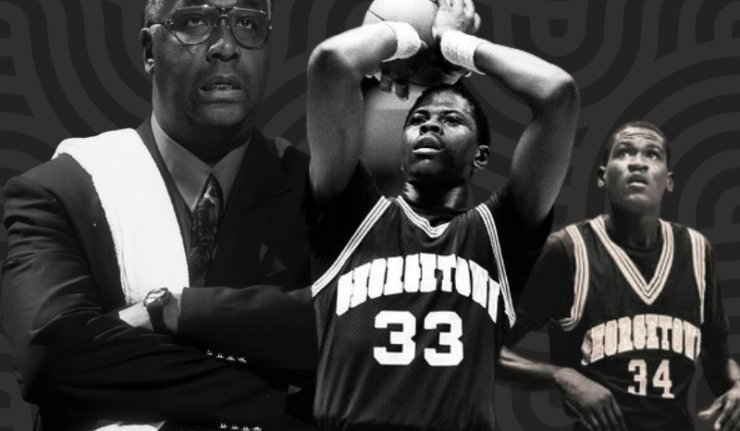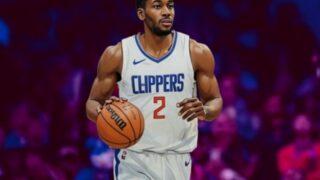The Georgetown Hoyas were more than just a dominant college basketball team in the 1980s—they were a cultural movement that reshaped the sport. Led by the revolutionary John Thompson Jr., the first Black head coach to win an NCAA championship, Georgetown became a beacon of Black excellence, toughness, and style. Their rise to prominence not only changed how the game was played but also altered perceptions about minority coaches and players in college basketball.
The John Thompson Era: Breaking Barriers
When John Thompson took over Georgetown’s basketball program in 1972, the team was struggling, having experienced little national success. By the time the 1980s arrived, he had built a powerhouse that was both feared and admired. Under Thompson, the Hoyas were known for their physical, defensive-minded style of play, characterized by shot-blocking big men, aggressive guards, and relentless full-court pressure.
But Thompson’s influence extended far beyond the court. As one of the first high-profile Black coaches in college basketball, he challenged racial biases and pushed for opportunities for Black athletes and coaches. He made it clear that his players were student-athletes, not just athletes, ensuring they received a quality education. His presence in a sport historically dominated by white coaches and administrators was a statement in itself.
Georgetown’s Impact on Black Culture
The Hoyas weren’t just a team—they were a cultural phenomenon. Georgetown gear, with its signature navy blue and gray colors, became a fashion statement in the 1980s and 1990s. Rappers, athletes, and inner-city youth embraced the Hoyas as symbols of toughness, unity, and Black empowerment. Hip-hop icons like EPMD, Biggie Smalls, and Tupac Shakur were frequently seen wearing Georgetown apparel, linking the program directly to the rise of hip-hop culture.
Additionally, Thompson’s outspoken nature regarding race and justice resonated with Black America. He famously walked off the court in protest of Proposition 42, an NCAA regulation that disproportionately hurt Black athletes by restricting scholarships for those who didn’t meet certain standardized test scores. He was not just a coach; he was an activist and role model.
Georgetown’s Dominance in the 1980s
The Hoyas were a March Madness juggernaut throughout the decade, appearing in three national championship games (1982, 1984, and 1985) and consistently ranking among the country’s top teams.
1982 NCAA Tournament: The Arrival of a Powerhouse
The Hoyas made their first major national statement in 1982, led by a freshman sensation named Patrick Ewing. Thompson made headlines by starting five Black players—still uncommon in many programs—and guiding the Hoyas to the national title game against North Carolina.
The championship game remains one of the most famous in NCAA history. With Ewing anchoring the defense, Georgetown controlled much of the game, but a last-second jump shot by Michael Jordan gave North Carolina the title. Despite the loss, the game put Georgetown on the map as a force to be reckoned with.
1984 NCAA Championship: Breaking Barriers
Two years later, Georgetown returned to the championship game, this time against Houston’s Phi Slama Jama, led by future NBA legend Hakeem Olajuwon. This time, the Hoyas left no doubt, winning 84-75 behind Ewing’s dominance.
With that victory, John Thompson became the first Black head coach to win an NCAA championship, a momentous achievement that shattered racial barriers. His image—towering over his players with a white towel draped over his shoulder—became one of the most iconic in sports history.
1985 NCAA Tournament: The Ultimate Upset
A year later, Georgetown seemed poised to win back-to-back titles. Entering the 1985 NCAA Tournament as the number one overall seed, they steamrolled through opponents, reaching their third championship game in four years.
Their opponent, however, was a team no one expected to win: the Villanova Wildcats. Playing a near-perfect game, Villanova shot a staggering 78.6% from the field, the highest percentage ever in a championship game. Georgetown, despite its superior talent, couldn’t overcome Villanova’s flawless execution, losing 66-64 in one of the greatest upsets in sports history.
The Georgetown “Bad Boys” Image
A major part of Georgetown’s legacy was its intimidating presence. Opponents feared their suffocating defense, but the Hoyas also faced criticism from media and fans who saw their swagger and aggression as unsportsmanlike.
Patrick Ewing was frequently labeled a villain, often being booed mercilessly by opposing fans. Racist caricatures of Georgetown as a “thug” program circulated, reinforcing stereotypes about predominantly Black teams. However, the Hoyas embraced the villain role, using it as fuel to dominate the competition.
The Legacy of Georgetown’s 1980s Run
By the end of the decade, Georgetown had left an indelible mark on college basketball. They had:
- Elevated the profile of Black coaches, paving the way for future minority leaders in college basketball.
- Inspired future generations of Black athletes, who saw themselves reflected in Georgetown’s success.
- Defined a new era of college basketball, with emphasis on physical defense and dominant big men.
Though their dominance faded in the 1990s, their cultural impact remained. The Hoyas made basketball more than a game—it was a statement.
The Georgetown Hoyas of the 1980s were more than just a great basketball team. They were a cultural movement, a symbol of Black empowerment, and a revolutionary force in college basketball.
Their March Madness successes and failures helped define the era, while their influence on Black culture, hip-hop, and social activism ensured their legacy extended far beyond the court.




